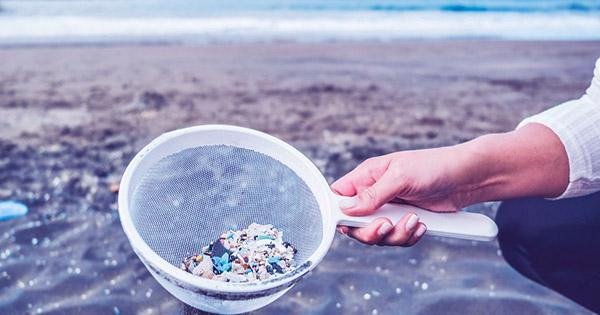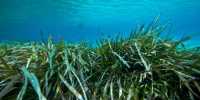New research has found that thousands of tons of microplastics that travel to the ocean can be brought back to shore with the help of sea air. Microplastics pollution is ubiquitous around the planet and is found in almost every corner of the planet. Previous studies have suggested that microplastics can be transported over long distances in the atmosphere by wind and were discovered in the rain-soaked Rocky Mountains in the Antarctic ice and in the littered Pyrenees Mountains on the beaches of several remote islands in the world.
In 2018 alone, 359 million tons of plastic were produced worldwide – about 10 percent of which is thought to have been transferred to the oceans by pollution each year. Until now, it was thought that the plastics that traveled to the ocean were fixed here, moving along the currents before finally settling on the shore.
Co-author Dr Deonie Allen said in a statement. “Where sea plastics are ‘lost’ is relatively unknown and this study has added a small but important piece to the puzzle.” “We don’t know much about the effects on humans, but a growing number of studies show that microplastic particles have the potential to breathe.”
Researchers at the University of Strathclyde and the Observatory Midi-Piracy have reviewed the existing literature on microplastics, finding evidence that microplastics operate in “several remote corners of the world” despite how they have been “limitedly discussed.” There it is. To determine what processes might contribute to the global spread, the team conducted a pilot study for microplastics analysis in marine sprays across the Atlantic southwest coast of France. For a week, the researchers hired a “cloud catcher” machine and pumped filters to catch water droplets, and then analyzed them for microplastics. Different wind directions and speeds were tested, as well as conditions for different weather events such as storms or fog.
The researchers found the first evidence that microplastics were expelled by sea spray and released into the atmosphere, even before both coastal and coastal winds were sent back to land. The microplastics samples collected were “dominated by marine spray” and were plastic fragments ranging in size from as small as 5 micrometers and as large as 140 micrometers. The fog produced by the surf produces a maximum density of 19 particles of plastic per cubic meter of air. The investigations described in Plus One indicate that microplastics can be transferred from the sea to the atmosphere by “bubble burst ejection” and “wave action” – such as wind phenomena or turbulent seas – and spray atmosphere back to shore through the ocean.
Steve Allen, a Strathclyde PhD candidate said, “Sea air is traditionally considered clean air, but this study carries an astonishing amount of microplastics particles. It seems that some plastic particles can leave the sea and enter the atmosphere with sea salts, bacteria, viruses, and algae.”
“Particle bubble emissions are a well-known phenomenon, but we have now shown that microplastics are also coming out of the oceans. To date, the oceans have not been considered as a source of atmospheric microplastics.” Researchers have concluded that if microplastics can survive at sea and “become involved through ocean-atmospheric exchanges”, more research is needed to better understand the effects of atmospheric microplastics transport.
















